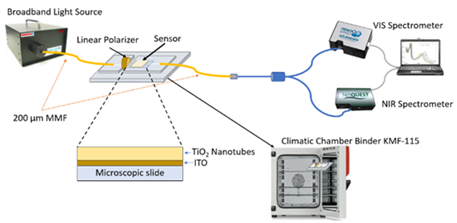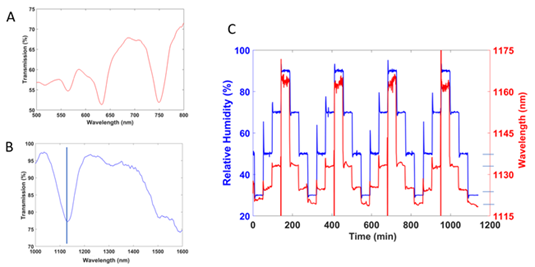Ordered Titanium Dioxide Nanotubes for Lossy-mode Resonance-based Humidity Sensing
Emil Pituła
supervisor: Mateusz Śmietana
In this work I present a new material solution for optical sensing application. The material had been achieved by well-controlled anodization process of Titanium (Ti) thin film deposited on indium tin oxide (ITO) covered glass substrate. Anodization technique allows for repeatable formation of ordered structure that is crucial for application at a large technological scale. The process involves connecting coated substrates to a power supply as an anode, while platinum mesh was utilized as cathode. Through the anodization in thermostatic reactor filled with specific solution the TiO2 structures grow out of the Ti layer. In this work parameters were optimized to receive a thin-walled nanotubes array.
Glass substrate of the structure acts as an waveguide. For the nanostructured TiO2 and ITO layer it is possible to observe Lossy Mode Resonance (LMR) effect. LMR coupling occurs between lossy-modes guided in a thin film and modes in a waveguide. Optical measurement of the sensor was performed in the wavelength range of 400-1700 nm (Fig. 1). In the setup the coated glass slide was put between two multimode fibers with free-space coupling.

Fig. 1 Schematic representation of an optical setup used in this experiment.
A series of measurements in climate chamber was performed in cycles of changing humidity ranging from 30% up to 90% (Fig. 2).

Fig. 2 (A) TE mode transmission spectrum of the sensor in visible range and (B) in NIR range with LMR minimum considered for humidity sensing. (C) Sensogram showing shift of the LMR wavelength with humidity change (red) and control readout of built-in chamber sensor (blue).